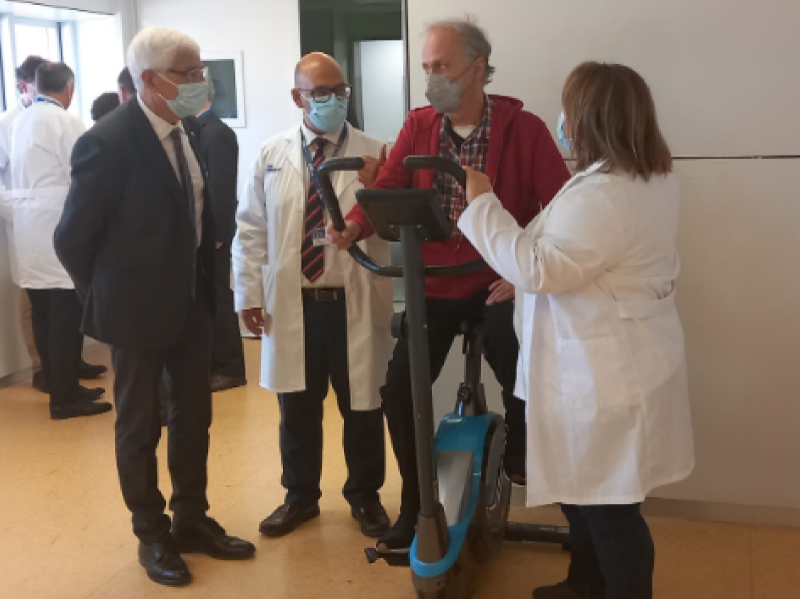- Vall d’Hebron University Hospital has completed the first ever fully endoscopic lung transplant surgery
- The Vall d’Hebron Thoracic Surgery and Lung Transplant Department performed the transplant through the lower part of the sternum, also a world first
Vall d’Hebron University Hospital has achieved a double milestone in the field of lung transplantation. For the first time, a lung has been transplanted using a minimally invasive technique that involves the use of robotic surgery while also creating a new access route through which to remove the diseased lungs and insert the new ones.
The Minister of Health, Manel Balcells, thanked all the professionals and organisations that took part in this state-of-the-art surgery. “Today we feel proud because we are presenting a technique that is the first of its kind anywhere in the world and which has been carried out by the Catalan health system as a whole, contributing to the clinical improvement of all patients.” In this respect, he emphasised that, with innovative experiences such as this one, “Catalonia’s public health system is contributing to improvements in global clinical practices that enhance patients' well-being”.
Balcells explained that the transplant was carried out via “a less invasive route that allows for faster recovery.” Specifically, the new access route was via the lower part of the sternum, through an eight-centimetre incision just above the diaphragm. This made it unnecessary, for the first time, to create a large opening by separating ribs and opening the thorax, which was previously the only option available.
Lung transplantation involves replacing one or two diseased lungs with healthy ones, usually in the case of patients with diseases that lead to severe and progressive chronic respiratory failure. The first successful lung transplant was performed in 1981 in California. In Catalonia, this type of surgery is carried out exclusively at the Vall d’Hebron University Hospital for both children and adults, and more than 1,500 lung transplants have been performed at this hospital since the start of the programme.
“The big problem with opening the thorax when performing a lung transplant is that it is a very aggressive approach with a very delicate postoperative period,” explained Dr Albert Jauregui, Head of the Thoracic Surgery and Lung Transplant Department at Vall d’Hebron University Hospital. In any transplant, in order to prevent rejection of the new organ, the patient must be given medication to suppress the immune system for life, meaning the risk of post-operative infection is always very high. Now, the paradigm has changed: “This new surgical technique allows us to cut through only a small amount of skin, fat and muscle, leaving a wound that closes easily, is much safer, and in this first patient has been virtually painless. This is a historic milestone that we believe will improve the lives of thousands of patients,” said Dr Jauregui.
The professionals in the Thoracic Surgery and Lung Transplant Department at Vall d’Hebron University Hospital had been planning for some time to introduce robotic surgery in lung transplantation, something that had been used only once before, albeit on a less ambitious scale, at Cedars-Sinai Medical Center in Los Angeles, USA. This centre used robotic surgery last year for the first time for part of a lung transplantation, when suturing the new lung to the recipient’s airway and great vessels, while the rest of the operation was performed using traditional techniques and the lung was introduced between the ribs as usual.


